Control interventions in randomised trials among people with mental health disorders
- PMID: 35377466
- PMCID: PMC8979177
- DOI: 10.1002/14651858.MR000050.pub2
Control interventions in randomised trials among people with mental health disorders
Abstract
Background: Control interventions in randomised trials provide a frame of reference for the experimental interventions and enable estimations of causality. In the case of randomised trials assessing patients with mental health disorders, many different control interventions are used, and the choice of control intervention may have considerable impact on the estimated effects of the treatments being evaluated.
Objectives: To assess the benefits and harms of typical control interventions in randomised trials with patients with mental health disorders. The difference in effects between control interventions translates directly to the impact a control group has on the estimated effect of an experimental intervention. We aimed primarily to assess the difference in effects between (i) wait-list versus no-treatment, (ii) usual care versus wait-list or no-treatment, and (iii) placebo interventions (all placebo interventions combined or psychological, pharmacological, and physical placebos individually) versus wait-list or no-treatment. Wait-list patients are offered the experimental intervention by the researchers after the trial has been finalised if it offers more benefits than harms, while no-treatment participants are not offered the experimental intervention by the researchers.
Search methods: In March 2018, we searched MEDLINE, PsycInfo, Embase, CENTRAL, and seven other databases and six trials registers.
Selection criteria: We included randomised trials assessing patients with a mental health disorder that compared wait-list, usual care, or placebo interventions with wait-list or no-treatment .
Data collection and analysis: Titles, abstracts, and full texts were reviewed for eligibility. Review authors independently extracted data and assessed risk of bias using Cochrane's risk of bias tool. GRADE was used to assess the quality of the evidence. We contacted researchers working in the field to ask for data from additional published and unpublished trials. A pre-planned decision hierarchy was used to select one benefit and one harm outcome from each trial. For the assessment of benefits, we summarised continuous data as standardised mean differences (SMDs) and dichotomous data as risk ratios (RRs). We used risk differences (RDs) for the assessment of adverse events. We used random-effects models for all statistical analyses. We used subgroup analysis to explore potential causes for heterogeneity (e.g. type of placebo) and sensitivity analyses to explore the robustness of the primary analyses (e.g. fixed-effect model).
Main results: We included 96 randomised trials (4200 participants), ranging from 8 to 393 participants in each trial. 83 trials (3614 participants) provided usable data. The trials included 15 different mental health disorders, the most common being anxiety (25 trials), depression (16 trials), and sleep-wake disorders (11 trials). All 96 trials were assessed as high risk of bias partly because of the inability to blind participants and personnel in trials with two control interventions. The quality of evidence was rated low to very low, mostly due to risk of bias, imprecision in estimates, and heterogeneity. Only one trial compared wait-list versus no-treatment directly but the authors were not able to provide us with any usable data on the comparison. Five trials compared usual care versus wait-list or no-treatment and found a SMD -0.33 (95% CI -0.83 to 0.16, I² = 86%, 523 participants) on benefits. The difference between all placebo interventions combined versus wait-list or no-treatment was SMD -0.37 (95% CI -0.49 to -0.25, I² = 41%, 65 trials, 2446 participants) on benefits. There was evidence of some asymmetry in the funnel plot (Egger's test P value of 0.087). Almost all the trials were small. Subgroup analysis found a moderate effect in favour of psychological placebos SMD -0.49 (95% CI -0.64 to -0.30; I² = 53%, 39 trials, 1656 participants). The effect of pharmacological placebos versus wait-list or no-treatment on benefits was SMD -0.14 (95% CI -0.39 to 0.11, 9 trials, 279 participants) and the effect of physical placebos was SMD -0.21 (95% CI -0.35 to -0.08, I² = 0%, 17 trials, 896 participants). We found large variations in effect sizes in the psychological and pharmacological placebo comparisons. For specific mental health disorders, we found significant differences in favour of all placebos for sleep-wake disorders, major depressive disorder, and anxiety disorders, but the analyses were imprecise due to sparse data. We found no significant differences in harms for any of the comparisons but the analyses suffered from sparse data. When using a fixed-effect model in a sensitivity analysis on the comparison for usual care versus wait-list and no-treatment, the results were significant with an SMD of -0.46 (95 % CI -0.64 to -0.28). We reported an alternative risk of bias model where we excluded the blinding domains seeing how issues with blinding may be seen as part of the review investigation itself. However, this did not markedly change the overall risk of bias profile as most of the trials still included one or more unclear bias domains.
Authors' conclusions: We found marked variations in effects between placebo versus no-treatment and wait-list and between subtypes of placebo with the same comparisons. Almost all the trials were small with considerable methodological and clinical variability in factors such as mental health population, contents of the included control interventions, and outcome domains. All trials were assessed as high risk of bias and the evidence quality was low to very low. When researchers decide to use placebos or usual care control interventions in trials with people with mental health disorders it will often lead to lower estimated effects of the experimental intervention than when using wait-list or no-treatment controls. The choice of a control intervention therefore has considerable impact on how effective a mental health treatment appears to be. Methodological guideline development is needed to reach a consensus on future standards for the design and reporting of control interventions in mental health intervention research.
Copyright © 2022 The Cochrane Collaboration. Published by John Wiley & Sons, Ltd.
Conflict of interest statement
The review authors have no relevant interests to declare.
Figures
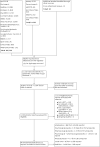

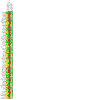




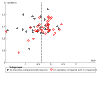
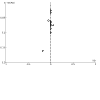

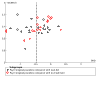


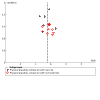
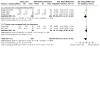
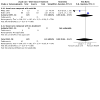
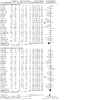
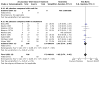
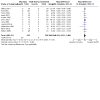

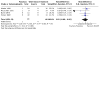
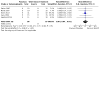

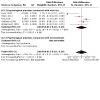
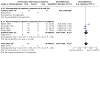

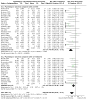
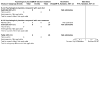
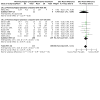
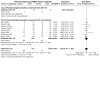
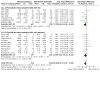
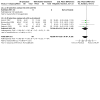
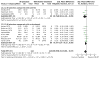

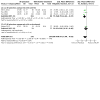
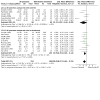
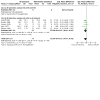
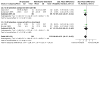
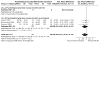
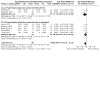
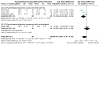
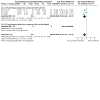
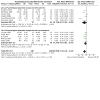
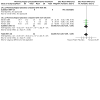
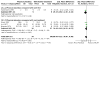
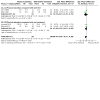

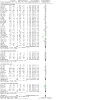

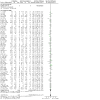
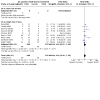
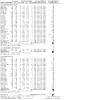
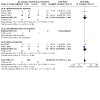
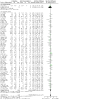
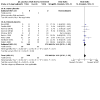
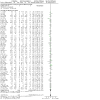

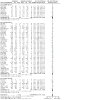
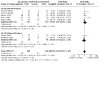
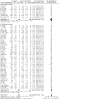
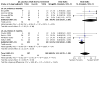
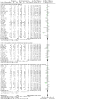
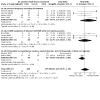
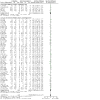
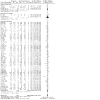
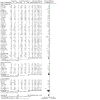
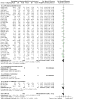
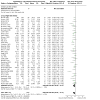
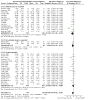
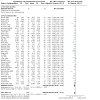
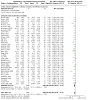

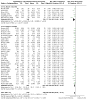
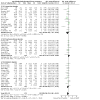
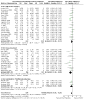
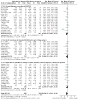
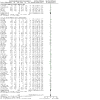
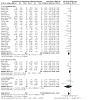
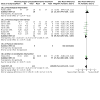
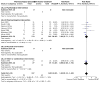


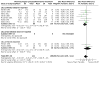
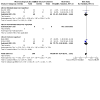
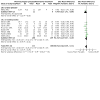


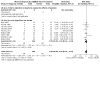
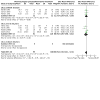

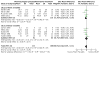
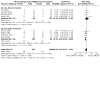
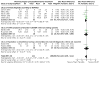
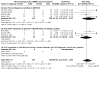
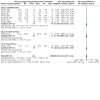
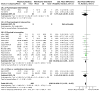
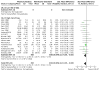

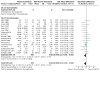
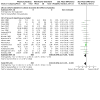
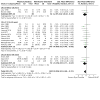
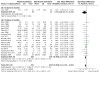
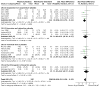
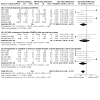
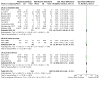
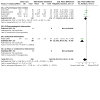
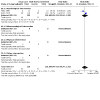
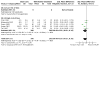
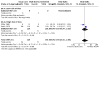
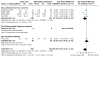
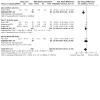
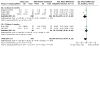
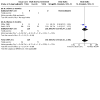
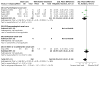
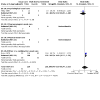
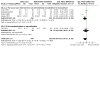
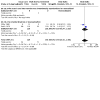
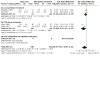
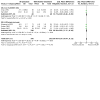
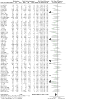
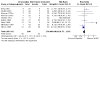
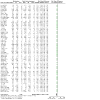
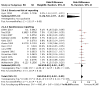

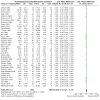
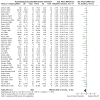

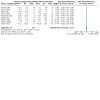
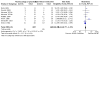
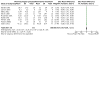
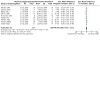
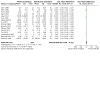
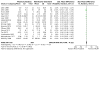
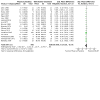

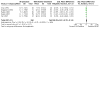
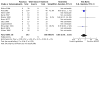
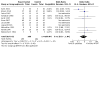
Update of
References
References to studies included in this review
Abikoff 2004 {published data only}
-
- Abikoff H, Hechtman L, Klein RG.Social functioning in children with ADHD treated with long-term methylphenidate and multimodal psychosocial treatment. Journal of the American Academy of Child and Adolescent Psychiatry 2004;43(7):820-9. - PubMed
-
- Abikoff H.Inclusion of study in Cochrane Systematic Review [personal communication]. Email to A Todorovac 23rd of August 2019.
-
- Klein RG, Abikoff H, Hechtman L, Weiss G.Design and rationale of controlled study of long-term methylphenidate and multimodal psychosocial treatment in children with ADHD. Journal of the American Academy of Child and Adolescent Psychiatry 2004;43(7):792-801. - PubMed
Allen 1998 {published data only}
-
- Allen JB.Inclusion of study in Cochrane Systematic Review [personal communication]. Email to A Todorovac 28th of August 2019.
-
- Allen JJ, Schnyer RN, Hitt SK.The efficacy of acupuncture in the treatment of major depression in women. Psychological Science 1998;9(5):397-401.
Allen 2006 {published data only}
-
- Allen JB.Inclusion of study in Cochrane Systematic Review [personal communication]. Email to: A Todorovac 28th of August 2019.
-
- Allen JJ, Schnyer RN, Chambers AS, Hitt SK, Moreno FA, Manber R.Acupuncture for depression: a randomized controlled trial. Journal of Clinical Psychiatry 2006;67(11):1665-73. - PubMed
Alvarez 1997 {published data only}
-
- Alvarez JR.The effects of anger management training on depression, anger, self-concept, and treatment responsibility in a sample of drug-dependent individuals in a therapeutic community. Dissertation Abstracts International: Section B: the Sciences and Engineering 1997;58(4-B):2108.
Ascher 1979 {published data only}
-
- Ascher LM, Turner R.Paradoxical intention and insomnia: an experimental investigation. Behaviour Research and Therapy 1979;17(4):408-11. - PubMed
Ayen 2004 {published data only}
-
- Ayen I, Hautzinger M.Cognitive behavior therapy for depression in menopausal women. A controlled, randomized treatment study [Kognitive Verhaltenstherapie bei Depressionen im Klimakterium: Eine kontrollierte, randomiserte Interventionsstudie]. Zeitschrift für Klinische Psychologie und Psychotherapie 2004;33(4):290-9.
-
- Ayen I.Inclusion of study in Cochrane Systematic Review (personal communication). Email to EG Faltinsen 9th of September 2019.
Berg 1983 {published data only}
-
- Berg I, Forsythe I, Holt P, Watts J.A controlled trial of ‘Senokot’ in faecal soiling treated by behavioural methods. Journal of Child Psychology and Psychiatry 1983;24(4):543-9. - PubMed
Borden 1986 {published data only}
-
- Borden, KA.Attributional Outcomes: the Subtle Messages of Treatments for Attention Deficit Disorder. Dissertation, University of Illinois at Urbana-Champaign 1986.
-
- Borden KA, Brown RT.Attributional outcomes: The subtle messages of treatments for attention deficit disorder. Cognitive Therapy and Research 1989;13(2):147-60.
Borkovec 1975 {published data only}
-
- Borkovec TD, Kaloupek DG, Slama KM.The facilitative effect of muscle tension-release in the relaxation treatment of sleep disturbance. Behavior Therapy 1975;6(3):301-9.
Borkovec 1976 {published data only}
-
- Borkovec TD, Weerts TC.Effects of progressive relaxation on sleep disturbance: an electroencephalographic evaluation. Psychosomatic Medicine 1976;38(3):173-80. - PubMed
Bornovalova 2008 {published data only}
-
- Bornovalova M.Inclusion of study in Cochrane Systematic Review (personal communication). Email to A Todorovac. 21st of August 2019.
-
- Bornovalova MA.Distress tolerance treatment for inner-city drug users: a preliminary trial. Doctor’s Dissertation, University of Maryland 2008.
Bramston 1985 {published data only}
-
- Bramston P, Spence SH.Behavioural versus cognitive social-skills training with intellectually-handicapped adults. Behaviour Research and Therapy 1985;23(3):239-46. - PubMed
Brill 1964a {published data only}
Brill 1964b {published data only}
-
- Brill NQ, Koegler RR, Epstein LJ, Forgy EW.Controlled study of psychiatric outpatient treatment. Archives of General Psychiatry 1964;10:581-95. - PubMed
Carlson 1993 {published data only}
-
- Carlson CL, Pelham WE, Milich R, Hoza B.ADHD boys’ performance and attributions following success and failure: drug effects and individual differences. Cognitive Therapy and Research 1993;17:269-87.
Carter 2003 {published data only}
-
- Carter JC, Olmsted MP, Kaplan AS, McCabe RE, Mills JS, Aime A.Self-help for bulimia nervosa: a randomized controlled trial. American Journal of Psychiatry 2003;160(5):973-8. - PubMed
Crisp 1991 {published data only}
-
- Crisp AH, Norton K, Gowers S, Halek C, Bowyer C, Yeldham D, et al.A controlled study of the effect of therapies aimed at adolescent and family psychopathology in Anorexia Nervosa. British Journal of Psychiatry: the Journal of Mental Science 1991;159:325-33. - PubMed
-
- Gowers S, Norton K, Halek C, Crisp AH.Outcome of outpatient psychotherapy in a random allocation treatment study of anorexia nervosa. International Journal of Eating Disorders 1994;15(2):165-77. - PubMed
-
- Gowers S, Norton K, Yelsham D.The St George's prospective treatment study of anorexia nervosa: a discussion of methodological problems. International Journal of Eating Disorders 1989;8:445-54.
Crouch 1988 {published data only}
-
- Crouch G, Robson M, Hallstrom C.Benzodiazepine dependent patients and their psychological treatment. Progress in Neuro-psychopharmacology & Biological Psychiatry 1988;12(4):503-10. - PubMed
-
- Hallström C, Crouch G, Robsen M, Shine P.The treatment of tranquillizer dependence by propranolol. Postgraduate Medical Journal 1988;64(Suppl 2):40-4. - PubMed
Doty 1975 {published data only}
-
- Doty, DW.Role playing and incentives in the modification of the social interaction of chronic psychiatric patients. Journal of Consulting and Clinical Psychology 1975;43(5):676-82. - PubMed
Double 1993 {published data only}
-
- Double DB, Warren GC, Evans M, Rowlands MP.Efficacy of maintenance use of anticholinergic agents. Acta Psychiatrica Scandinavica 1993;88:381-4. - PubMed
Ehlers 2014 {published data only}
Espie 1989a {published data only}
-
- Espie CA, Lindsay WR, Brooks DN, Hood EM, Turvey T.A controlled comparative investigation of psychological treatments for chronic sleep-onset insomnia. Behaviour Research and Therapy 1989;27(1):79-88. - PubMed
Etringer 1982 {published data only}
-
- Etringer BD, Cash TF, Rimm DC.Behavioral, affective, and cognitive effects of participant modeling and an equally credible placebo. Behavior Therapy 1982;13(4):476-85.
Foa 1991 {published data only}
-
- Foa EB, Rothbaum BO, Riggs DS, Murdock TB.Treatment of posttraumatic stress disorder in rape victims: a comparison between cognitive-behavioral procedures and counselling. Journal of Consulting and Clinical Psychology 1991;59(5):715-23. - PubMed
Foa 2018 {published data only}
Freire 2007 {published data only}
-
- Freire AO, Sugai GC, Chrispin FS, Togeiro SM, Yamamura Y, Mello LE, et al.Treatment of moderate obstructive sleep apnea syndrome with acupuncture: a randomised, placebo-controlled pilot trial. Sleep Medicine 2007;8(1):43-50. - PubMed
Fuchs 1977 {published data only}
-
- Fuchs CZ, Rehn LP.A self-control behavior therapy program for depression. Journal of Consulting and Clinical Psychology 1977;45(2):206-15. - PubMed
Glogowska 2000 {published data only}
Goldstein 2000 {published data only}
-
- Goldstein AJ, Beurs E, Chambless Dl, Wilson KA.EMDR for panic disorder with agoraphobia: comparison with waiting list and credible attention-placebo control conditions. Journal of Consulting and Clinical Psychology 2000;68(6):947-56. - PubMed
Goldwasser 1987 {published data only}
-
- Goldwasser AN, Auerbach SM, Harkins SW.Cognitive, affective, and behavioural effects of reminiscence group therapy on demented elderly. Aging and Human Development 1987;25(3):209-22. - PubMed
Hekmat 1984 {published data only}
-
- Hekmat H, Lubitz R, Deal R.Semantic desensitization: a paradigmatic intervention approach to anxiety disorders. Journal of Clinical Psychology 1984;40(2):463-6. - PubMed
Hippman 2016 {published data only}
Howlin 2007 {published data only}
-
- Howlin P, Gordon KR, Pasco G, Wade A, Charman T.The effectiveness of picture exchange communication system (PECS) training for teachers of children with autism: a pragmatic,group randomised controlled trial. Journal of Child Psychology and Psychiatry 2007;48(5):473-81. - PubMed
Karst 2007 {published data only}
-
- Karst M, Winterhalter M, Münte S, Francki B, Hondronikos A, Eckardt A, et al.Auricular acupuncture for dental anxiety: a randomized controlled trial. Anesthesia and Analgesia 2007;104(2):295-300. - PubMed
-
- Karst M.Inclusion of study in Cochrane Systematic Review (personal communication). Email to: EG Faltinsen 5th of September 2019.
Kelley 2012 {published data only}
-
- Kelley J.Inclusion of study in Cochrane Systematic Review (personal communication). Email to: A Todorovac 12th of August 2019.
Kennedy 1974 {published data only}
-
- Kennedy TD, Kimura HK.Transfer, behavioral improvement, and anxiety reduction in systematic desensitization. Journal of Consulting and Clinical Psychology 1974;42(5):720-8. - PubMed
Kilmann 1987 {published data only}
-
- Kilmann PR, Milan RJ, Boland JP, Nankin HR, Davidson E, West MO, et al.Group treatment of secondary erectile dysfunction. Journal of Sex & Marital Therapy 1987;13(3):168-82. - PubMed
-
- Kilmann PR, Milan RJ Jr, Boland JP, Davidson E, West MO, Sablis RF, et al.The sexual interactions of men with secondary erectile dysfunction. Journal of Sex Education and Therapy 1988;14(1):46-9.
-
- Kilmann PR, Milan RJ Jr, Boland JP, Nankin HR, Sablis RF, West MO, et al.The sexual interactions of men with secondary erectile dysfunction. Paper presented at the annual meeting of the American Psychological Association in Los Angeles 1985;1:46-9.
Klein 1977 {published data only}
-
- Klein SA, Deffenbacher JL.Relaxation and exercise for hyperactive impulsive children. Perceptual and Motor Skills 1977;45:1159-62. - PubMed
Klerman 1974a {published data only}
-
- Klerman GL, Dimascio A, Weismann M, Prusoff B, Paykel ES.Treatment of depression by drugs and psychotherapy. American Journal of Psychiatry 1974;131(2):186-91. - PubMed
-
- Paykel ES, Dimascio A, Haskell D, Prusoff BA.Effects of maintenance amitriptyline and psychotherapy on symptoms of depression. Psychological Medicine 1975;5(1):67-77. - PubMed
-
- Paykel ES, DiMascio A, Klerman GL, Prusoff BA.Maintenance therapy of depression. Pharmakopsychiatrie, Neuro-Psychopharmakologie 1976;9:127-39. - PubMed
-
- Paykel ES, Weissman MM, Prusoff BA.Social maladjustment and severity of depression. Comprehensive Psychiatry 1978;19(2):121-8. - PubMed
-
- Weissman MM, Klerman GL, Paykel ES, Prusoff B.Treatment effects on the social adjustment of depressed patients. Archives of General Psychiatry 1974;30:771-8. - PubMed
Klerman 1974b {published data only}
-
- Klerman GL, Dimascio A, Weismann M, Prusoff B, Paykel ES.Treatment of depression by drugs and psychotherapy. American Journal of Psychiatry 1974;131(2):186-91. - PubMed
Klosko 1990 {published data only}
-
- Klosko JS, Barlow DH, Tassinari R, Cerny JA.A comparison of alprazolam and behavior therapy in treatment of panic disorder. Journal of Consulting and Clinical Psychology 1990;58(1):77-84. - PubMed
Krapfl 1970 {published data only}
-
- Krapfl JE, Nawas MM.Differential ordering of stimulus presentation in systematic desensitization. Journal of Abnormal Psychology 1970;75(3):333-7. - PubMed
Kwan 2017 {published data only}
-
- Kwan R.Inclusion of study in Cochrane Systematic Review [personal communication]. Email to: A Todorovac 26th of August 2019.
-
- Kwan RY, Leung MCP, Lai CK.A randomized controlled trial examining the effect of acupressure on agitation and salivary cortisol in nursing home residents with dementia. Dementia and Geriatric Cognitive Disorders 2017;44(1-2):92-104. - PubMed
Lacy 1990 {published data only}
-
- Lacy MK.The effect of short term autogenic training on the stress reactivity of hospitalized emotionally disturbed adolescents. ProQuest Dissertations Publishing, Oklahoma State University 1996.
Lai 2004 {published data only}
-
- Lai CK, Chi I, Kayser-Jones J.A randomized controlled trial of a specific reminiscence approach to promote the well-being of nursing home residents with dementia. International Psychogeriatrics 2004;16(1):33-49. - PubMed
-
- Lai K.Inclusion of study in Cochrane Systematic Review [personal communication]. Email to: A Todorovac 6th of September 2019.
Lang 1965 {published data only}
Legrand 2016 {published data only}
-
- Legrand F.Inclusion of study in Cochrane Systematic Review [personal communication]. Email to: A Todorovac 14th of August 2019.
-
- Legrand FD, Neff EM.Efficacy of exercise as an adjunct treatment for clinically depressed inpatients during the initial stages of antidepressant pharmacotherapy: an open randomized controlled trial. Journal of Affective Disorders 2016;191:139-44. - PubMed
Lick 1975 {published data only}
-
- Lick J.Expectancy, false galvanic skin response feedback, and systematic desensitization in the modification of phobic behavior. Journal of Consulting and Clinical Psychology 1975;43(4):557-67. - PubMed
Lick 1977 {published data only}
-
- Lick JR, Heffler D.Relaxation training and attention placebo in the treatment of severe insomnia. Journal of Consulting and Clinical Psychology 1977;45(2):153-61. - PubMed
Liddle 1990 {published data only}
-
- Liddle B, Spence SH.Cognitive-behaviour therapy with depressed primary school children: A cautionary note. Behavioural Psychotherapy 1990;18(2):85-102.
Matson 1980 {published data only}
-
- Matson JL, Marchetti A, Adkins JA.Comparison of operant- and independence-training procedures for mentally retarded adults. American Journal of Mental Deficiency 1980;84(5):487-94. - PubMed
McLachlan 1991 {published data only}
-
- McLachlan DR, Dalton AJ, Kruck TP, Bell MY, Smith WL, Kalow W, et al.Intramuscular desferrioxamine in patients with Alzheimer's disease. Lancet 1991;337(8753):1304-8. - PubMed
-
- McLachlan DRC, Smith WL, Kruck TP.Desferrioxamine and Alzheimer’s disease: video home behavior assessment of clinical course and measures of brain aluminum. Therapeutic Drug Monitoring 1993;15(6):602-7. - PubMed
Mealiea 1971 {published data only}
-
- Mealiea WL, Nawas MM.The comparative effectiveness of systematic desensitization and implosive therapy in the treatment of snake phobia. Journal of Behavior Therapy and Experimental Psychiatry 1971;2(2):85-94.
Milby 1980 {published data only}
-
- Milby JB, Clarke C, Toro C, Thornton S, Rickert D.Effectiveness of urine surveillance as an adjunct to outpatient psychotherapy for drug abusers. International Journal of the Addictions 1980;15(7):993-1001. - PubMed
Miranda 1997 {published data only}
-
- Miranda A, Arlandis P, Soriano M.Instruction in strategies and attributional training: Effects on the problem-solving and self-concept of students’ with learning disabilities [Instrucción en estrategias y entrenamiento atribucional: efectos sobre la resolución de problemas y el autoconcepto de los estudiantes con dificultades en el aprendizaje]. Infancia y Aprendizaje 1997;20(80):37-52.
Mitchell 2008 {published data only}
-
- Mitchell C, Mansfield D, Rautenbach S.Coloured filters and reading accuracy, comprehension and rate: a placebo-controlled study. Perceptual and Motor Skills 2008;106(2):517-32. - PubMed
Nandi 1976 {published data only}
-
- Nandi DN, Ajmany S, Ganguli H, Banerjee G, Boral GC, Ghosh A, et al.A clinical evaluation of depressives found in a rural survey in India. British Journal of Psychiatry 1976;128:523-7. - PubMed
Nicassio 1974 {published data only}
-
- Nicassio P, Bootzin R.A comparison of progressive relaxation and autogenic training as treatments for insomnia. Journal of Abnormal Psychology 1974;83(3):253-60. - PubMed
Pearl 1956 {published data only}
-
- Pearl D, Vander Kamp H, Olsen AL, Greenberg PD, Armitage SG.The effects of reserpine on schizophrenic patients. American Journal of Psychiatry 1956;112:198-204. - PubMed
Peck 1976 {published data only}
-
- Peck CL.Desensitization for the treatment of fear in the high level adult retardate. Behaviour Research and Therapy 1977;15(2):137-48. - PubMed
Pelham 1992 {published data only}
-
- Milich R, Carlson CL, Pelham WE Jr, Licht BG.Effects of methylphenidate on the persistence of ADHD boys following failure experiences. Journal of Abnormal Child Psychology 1991;19(5):519-36. - PubMed
-
- Pelham WE, Murphy DA, Vannatta K, Milich R, Licht BG, Gnagy EM, et al.Methylphenidate and attributions in boys with attention-deficit hyperactivity disorder. Journal of Consulting and Clinical Psychology 1992;60(2):282-92. - PubMed
Pendleton 1983 {published data only}
-
- Pedleton MG, Higgins RL.A comparison of negative practice and systematic desensitization in the treatment of acrophobia. Journal of Behavior Therapy and Experimental Psychiatry 1983;14(4):317-23. - PubMed
Pillman 2001 {published data only}
-
- Peterson MA, Patterson B, Pillman BM, Battista MA.Cognitive recovery following alcohol detoxification: a computerised remediation study. Neuropsychological Rehabilitation 2002;12(1):63-74.
-
- Pillman BM.Computerized cognitive remediation with recently detoxified alcoholics. Dissertation, California School of Professional Psychology, Fresno Campus 2000.
Poland 2013 {published data only}
Powers 2004 {published data only}
-
- Powers MB, Smits JA, Telch MJ.Disentangling the effects of safety-behavior utilization and safety-behavior availability during exposure-based treatment: a placebo-controlled trial. Journal of Consulting and Clinical Psychology 2004;72(3):448-54. - PubMed
Powers 2008a {published data only}
-
- Powers MB, Smiths JA, Whitley D, Bystritsky A, Telch MJ.The effect of attributional processes concerning medication taking on return of fear. Journal of Consulting and Clinical Psychology 2008;76(3):478-90. - PubMed
Powers 2008b {published data only}
-
- Powers MB, Smiths JA, Whitley D, Bystritsky A, Telch MJ.The effect of attributional processes concerning medication taking on return of fear. Journal of Consulting and Clinical Psychology 2008;76(3):478-90. - PubMed
Proudfoot 2013 {published data only}
-
- Proudfoot J.Re: Inclusion of study in Cochrane Systematic Review [personal communication]. Email to: A Todorovac 26th of August 2019.
Quayhagen 1995 {published data only}
-
- Quayhagen MP, Quayhagen M, Corbeil RR, Roth PA, Rodgers JA.A dyadic remediation program for care recipients with dementia. Nursing Research 1995;44(3):153-9. - PubMed
Rabkin 1990 {published data only}
-
- Liebowitz M, Quitkin FM, Stewart JW, McGrath PJ, Harrison WM, Markowitz JS, et al.Antidepressant efficacy in atypical depression. Archives of General Psychiatry 1988;45(2):129-37. - PubMed
-
- Quitkin FM, McGrath PJ, Stewart JW, Harrison W, Wager SG, Nunes E, et al.Phenelzine and imipramine in mood reactive depressives: further delineation of the syndrome of atypical depression. Archives of General Psychiatry 1989;46(9):787-93. - PubMed
-
- Rabkin JG, McGrath PJ, Quitkin FM, Tricamo E, Stewart JW, Klein DF.Effects of pill-giving on maintenance of placebo response in patients with chronic mild depression. American Journal of Psychiatry 1990;147(12):1622-6. - PubMed
Rapee 2006 {published data only}
-
- Rapee R.Inclusion of study in Cochrane Systematic Review [personal communication]. Email to: A Todorovac 29th of August 2019.
-
- Rapee RM, Abbott MJ, Lyneham HJ.Bibliotherapy for children With anxiety disorders using written materials for parents: a randomized controlled trial. Journal of Consulting and Clinical Psychology 2006;74(3):436-44. - PubMed
Rapee 2007 {published data only}
-
- Rapee R.Inclusion of study in Cochrane Systematic Review [personal communication]. Email to: A Todorovac 29th of August 2019.
-
- Rapee RM, Abbott MJ, Baillie AJ, Gaston JE.Treatment of social phobia through pure self-help and therapist-augmented self-help. British Journal of Psychiatry 2007;191:246-52. - PubMed
Robin 1976 {published data only}
-
- Robin A.Rationing out-patients: a defence of the waiting list. British Journal of Psychiatry 1976;129:138-41. - PubMed
Roehrich 1993 {published data only}
-
- Roehrich L, Goldman MS.Experience-dependent neuropsychological recovery and the treatment of alcoholism. Journal of Consulting and Clinical Psychology 1993;61(5):812-21. - PubMed
Rosa‐Alcatraz 2009 {published data only}
-
- Olivares J.Program IAFS. Protocol for the treatment of social phobia in adolescents [Programa IAFS. Protocolo para el tratamiento de la fobia social enadolescentes]. Madrid: Pirámide 2005;1.
-
- Rosa-Alcázar AI, Olivares-Olivares PJ, Olivares J.The role of non-specific effects in the psychological treatment of adolescents with social phobia [Papel de los efectos inespecíficos en el tratamiento psicológico de adolescentes con fobia social]. Anuario de Psicologia 2009;40(1):43-61.
Rosen 1976 {published data only}
-
- Rosen GM, Glasgow RE, Barrera M.A controlled study to assess the clinical efficacy of totally self-administrated systematic desensitization. Journal of Consulting and Clinical Psychology 1976;44(2):208-17. - PubMed
Roth 1964 {published data only}
-
- Lorr M, McNair DM, Weinstein GJ.Early effects of chlordiazepoxide (Librium) used with psychotherapy. Journal of Psychiatric Research 1963;1:257-70. - PubMed
-
- Roth I, Rhudick PJ, Shaskan DA, Slobin MS, Wilkinson AE, Young HH.Long-term effects on psychotherapy of initial treatment conditions. Journal of Psychiatric Research 1964;2:283-97. - PubMed
Rupert 1978 {published data only}
-
- Rupert PA, Holmes DS.Effects of multiple sessions of true and placebo heart rate biofeedback training on the heart rates and anxiety levels of anxious patients during and following treatment. Psychophysiology 1978;15(6):582-90. - PubMed
Shalev 2012 {published data only}
-
- Shalev AY, Ankri Y, Isreali-Shalev Y, Peleg T, Adessky R, Freedman S.Prevention of posttraumatic stress disorder by early treatment. Archives of General Psychiatry 2012;69(2):166-76. - PubMed
Shealy 1979 {published data only}
-
- Shealy RC.The effectiveness of various treatment techniques on different degrees and durations of sleep-onset insomnia. Behaviour Research and Therapy 1979;17(6):541-6. - PubMed
Sibilio 1957 {published data only}
-
- Sibilio JP, Andrew G, Dart D, Moore KB, Stehman A.Treatment of chronic schizophrenia with promazine hydrochloride. AMA Archives of Neurology and Psychiatry 1957;78(4):419-24. - PubMed
Sommerness 1955 {published data only}
-
- Sommerness MD, Lucero RJ, Hamlon JS, Erickson JL, Matthews R.A controlled study of reserpine on chronically disturbed patients. JAMA Archives of Neurology and Psychiatry 1955;74(3):316-9. - PubMed
Steinmark 1974 {published data only}
-
- Steinmark SW, Borkovec TD.Active and placebo treatment effects on moderate insomnia under counterdemand and positive demand instructions. Journal of Abnormal Psychology 1974;83(2):157-63. - PubMed
Szymanski 1995 {published data only}
-
- Szymanski J, O'Donohue W.The potential role of state-dependent learning in cognitive therapy with spider phobics. Journal of Rational-Emotive & Cognitive-Behavior Therapy 1995;13(2):131-50.
-
- Szymanski J.Inclusion of study in Cochrane Systematic Review [personal communication]. Email to: A Todorovac 20th of August 2019.
Tan 1986 {published data only}
-
- Tan SY, Bruni J.Cognitive-behavior therapy with adult patients with epilepsy: a controlled outcome study. Epilepsia 1986;27(3):225-33. - PubMed
Teri 1997 {published data only}
-
- Teri L, Logsdon RG, Uomoto J, McCurry SM.Behavioral treatment of depression in dementia patients: a controlled clinical trial. Journals of Gerontology. Series B, Psychological Sciences and Social Sciences 1997;52(4):159-66. - PubMed
-
- Teri L.Inclusion of study in Cochrane Systematic Review [personal communication]. Email to: A Todorovac 26th of August 2019.
Tori 1973 {published data only}
-
- Tori C, Worell L.Reduction of human avoidant behavior. A comparison of counterconditioning, expectancy, and cognitive information approaches. Clinical Psychology 1973;41(2):269-78. - PubMed
Trexler 1972 {published data only}
-
- Trexler, L.Rational-emotive therapy, placebo, and no-treatment effects on public-speaking anxiety. Doctoral dissertation, Temple University AnnArbor, Mich.: University Microfilms 1971;71-31(063).
-
- Trexler LD, Karst TO.Rational-emotive therapy, placebo, and no-treatment effects on public-speaking anxiety. Journal of Abnormal Psyhology 1972;79(1):60-7. - PubMed
Turner 1979 {published data only}
-
- Ascher ML, Turner RM.A comparison of two methods for the administration of paradoxical intention. Behaviour Research and Therapy 1980;18(2):121-6. - PubMed
-
- Turner RM, Ascher LM.Controlled comparison of progressive relaxation, stimulus control, and paradoxical intention therapies for insomnia. Journal of Consulting and Clinical Psychology 1979;47(3):500-8. - PubMed
Vanderplate 1983 {published data only}
-
- Vanderplate C.Electromyograph biofeedback Treatment of sleep onset Insomnia: a controlled Investigation. Dissertation, University of Southern Mississippi 1978.
Watzl 1988 {published data only}
-
- Watzl H, Rist F, Olbrich R, Cohen R.Placebo injections and surveillance of alcohol intake during inpatient treatment of female alcoholics. Addictive Behaviors 1988;13(2):197-200. - PubMed
Weingaertner 1971 {published data only}
-
- Weingaertner AH.Self-administered aversive stimulation with hallucinating hospitalized schizophrenics. Journal of Consulting and Clinical Psychology 1971;36(3):422-29. - PubMed
Whittaker 1963 {published data only}
-
- Whittaker CB, Hoy RM.Withdrawal of perphenazine in chronic schizophrenia. British Journal of Psychiatry 1963;109:422-7. - PubMed
Wilson 1980 {published data only}
-
- Wilson A, Davidson WJ, Blanchard R, White J.Disulfiram implantation. A placebo-controlled trial with two-year follow-up. Journal of Studies on Alcohol 1978;39(5):809-19. - PubMed
-
- Wilson A, Davidson WJ, Blanchard R.Disulfiram implantation: a trial using placebo implants and two types of controls. Journal of Studies on Alcohol 1980;41(5):429-36. - PubMed
Wolitzky 2009 {published data only}
-
- Wolitzky KB, Telch MJ.Augmenting in vivo exposure with fear antagonistic actions: a preliminary test. Behavior Therapy 2009;40(1):57-71. - PubMed
Wollersheim 1991 {published data only}
-
- Wollersheim JP, Wilson GL.Group treatment of unipolar depression: a comparison of coping, supportive, bibliotherapy, and delayed treatment groups. Professional Psychology: Research and Practice 1991;22(6):496-502.
References to studies excluded from this review
Adelman 1990 {published data only}
-
- Adelman HS, MacDonald VM, Nelson P, Smith DC, Taylor L.Motivational readiness and the participation of children with learning and behavior problems in psychoeducational decision making. Journal of Learning Disabilities 1990;23(3):171-6. - PubMed
Altenhofer 2007 {published data only}
-
- Altenhöfer A, Schulz W, Schwab R, Eckert J.Psychotherapy of adjustment disorders. Is psychotherapy if limited to 12 sessions sufficiently effective? [Psychotherapie von Anpassungsstörungen. Ist eine auf 12 Sitzungen begrenzte Gesprächspsychotherapie ausreichend wirksam?]. Psychotherapeut 2007;52:24-34.
Andreasson 1990 {published data only}
-
- Andréasson S, Parmander M, Allebeck P.A pilot study of treatment of alcohol abuse. Marked improvement of alcohol drinking habits of both treated and untreated persons. Läkartidningen 1990;87(9):627-30. - PubMed
Banasiak 2005 {published data only}
-
- Banasiak SJ, Paxton SJ, Hay P.Guided self-help for bulimia nervosa in primary care: a randomized controlled trial. Psychological Medicine 2005;35(9):1283-94. - PubMed
Bass 2016 {published data only}
-
- Bass J, Murray SM, Mohammed TA, Bunn M, Gorman W, Ahmed AM, et al.A randomized controlled trial of a trauma-informed support, skills, and psychoeducation intervention for survivors of torture and related trauma in Kurdistan, Northern Iraq. Global Health, Science and Practice 2016;4(3):452-66. - PMC - PubMed
de Jongh 1995 {published data only}
-
- Jongh A, Muris P, ter Horst G, Zuuren F, Schoenmakers N, Makkes P.One-session cognitive treatment of dental phobia: preparing dental phobics for treatment by restructuring negative cognition. Behaviour Research and Therapy 1995;33(8):947-54. - PubMed
Dolhanty 2005 {published data only}
-
- Dolhanty J.Symptom control and self-efficacy with electronic self-monitoring of bulimia nervosa: a randomized controlled trial. Dissertation, York University, North York, Ontario 2005.
Drozdek 2010 {published data only}
-
- Drožđek B, Bolwerk N.Evaluation of group therapy With traumatized asylum seekers and refugees—the Den Bosch model. Traumatology 2010;16(4):117-27.
Endicott 1964 {published data only}
-
- Endicott NA, Endicott J.Prediction of improvement in treated and untreated patients using the Rorschaf Prognostic Rating Scale. Journal of Consulting Psychology 1964;28:342-8. - PubMed
Ertl 2011 {published data only}
-
- Ertl V, Pfeiffer A, Schauer E, Elbert T, Neuner F.Community-implemented trauma therapy for former child soldiers in northern Uganda. JAMA 2011;306(5):503-12. - PubMed
Gitlin 2013 {published data only}
Gournay 1994 {published data only}
-
- Gournay K, Brooking J.Community psychiatric nurses in primary health care. British Journal of Psychiatry 1994;162(2):231-8. - PubMed
Haertzen 1964 {published data only}
-
- Haertzen CA.On the addiction research center inventory scores of former addicts receiving LSD and untreated schizophrenics. Psychological Reports 1964;14(1):483-8.
Hartelius 1968 {published data only}
-
- Hartelius H.Objective trial of sedatives: comparison between Noludar, Mogadon, placebo, and "no tablet at all" [Objektiv sömnmedelsprövning: Jämförelse mellan Noludar, Mogadon, placebo och ingen tablett alls]. Nordisk Medicin 1968;79(25):811-3. - PubMed
Hinsberger 2017 {published data only}
-
- Hinsberger M, Holtzhausen L, Sommer J, Kaminer D, Elbert T, Seedat S, et al.Feasibility and effectiveness of narrative exposure therapy and cognitive behavioral therapy in a context of ongoing violence in South Africa. Psychological Trauma: Theory, Research, Practice and Policy 2017;9(3):282-91. - PubMed
Keltner 1976 {published data only}
-
- Keltner L, Marshall WL.Attribution and subject control factors in experimental desensitization. Behavior Therapy 1976;7(5):626-33.
Laessle 1988 {published data only}
-
- Laessle RG, Waadt S, Schindler L, Schweiger U, Pirke M.Structured ambulatory group therapy in bulimia [Strukturierte ambulante Gruppentherapie bei Bulimie - Vorläufige Ergebnisse einer kontrollierten Therapiestudie]. PPmP Psychotherapie, Psychosomatik und Medizinische Psychologie 1988;38:324-7. - PubMed
Litrownik 1978 {published data only}
-
- Litrownik AJ, Freitas JL, Franzini LR.Self-regulation in mentally retarded children: assessment and training of self-monitoring skills. American Journal of Mental Deficiency 1978;82(5):499-506. - PubMed
Mak 2008 {published data only}
-
- Mak MK, Hui-Chan CW.Cued task-specific training is better than exercise in improving sit-to-stand in patients with Parkinson’s Disease: a randomized controlled trial. Movement Disorders : Official Journal of the Movement Disorder Society 2007;23(4):501-9. - PubMed
McCall 2005 {published data only}
-
- Mccall WV, Perlis ML, Tu X, Groman AE, Krystal A, Walsh JK.A comparison of placebo and no-treatment during a hypnotic clinical trial. International Journal of Clinical Pharmacology and Therapeutics 2005;43(8):355-9. - PubMed
McNeil 1991 {published data only}
-
- McNeil JK, LeBlanc EM, Joyner M.The effect of exercise on depressive symptoms in the moderately depressed elderly. Psychology and Aging 1991;6(3):487-8. - PubMed
Otteson 1979 {published data only}
-
- Otteson JP.Curative caring: the use of buddy groups with chronic schizophrenics. Journal of Consulting and Clinical Psychology 1979;47(3):649-51. - PubMed
Propst 1992 {published data only}
-
- Propst LR, Ostrom R, Watkins P, Dean T, Mashburn D.Comparative efficacy of religious and nonreligious cognitive-behavioral therapy for the treatment of clinical depression in religious individuals. Journal of Consulting and Clinical Psychology 1992;60(1):94-103. - PubMed
Sackley 2018 {published data only}
Salt 2002 {published data only}
-
- Salt J, Shemilt J, Sellars V, Boyd S, Coulson T, McCool S.The Scottish Centre for autism preschool treatment programme: II. The results of a controlled treatment outcome study. International Journal of Research and Practice 2002;6(1):33-46. - PubMed
Schultz 2002 {published data only}
-
- Schultz DE.The effectiveness of stress management on anxiety and depression. Doctor’s Dissertation, California School of Professional Psychology Fresno Campus 2002.
Sheikh 1986 {published data only}
-
- Sheikh JI, Hill RD, Yesavage JA.Long-term efficacy of cognitive training for age-associated memory impairment: a six-month follow-up study. Developmental Neuropsychology 1986;2(4):413-21.
Steiner 2011 {published data only}
-
- Steiner NJ, Sheldrick RC, Gotthelf D, Perrin EC.Computer-based attention training in the schools for children with Attention-Deficit/Hyperactivity Disorder: a preliminary trial. Clinical Pediatrics 2011;50(7):615-22. - PubMed
Timko 1995 {published data only}
-
- Timko C, Moos RH, Finney JW, Moos BS, Kaplowitz MS.Long-term treatment careers and outcomes of previously untreated alcoholics. Journal of Studies on Alcohol 1995;60(4):437-47. - PubMed
Tomporowski 1984 {published data only}
-
- Tomporowski PD, Ellis NR.Effects of exercise on the physical fitness, intelligence, and adaptive behavior of institutionalized mentally retarded adults. Applied Research in Mental Retardation 1984;5(3):329-37. - PubMed
Torkan 2014 {published data only}
Weber 1975 {published data only}
-
- Weber BA, Sulzbacher SI.Use of CNS stimulant medication in averaged electroencephalic audiometry with children with MBD. Journal of Learning Disabilities 1975;8(5):44-7.
Wilson 2002 {published data only}
-
- Wilson PH, Thomas PR, Maruff P.Motor imagery training ameliorates motor clumsiness in children. Journal of Child Neurology 2002;17(7):491-8. - PubMed
References to studies awaiting assessment
References to ongoing studies
Heitman 2017 {published data only}
ISRCTN21392756 {published data only}
-
- Standardised stress management mental health training: does it have a beneficial effect?. Ongoing study. 06/09/2010. Contact author for more information.
ISRCTN35717198 {published data only}
-
- Cognitive training with non-invasive brain stimulation to treat binge eating disorder. Ongoing study. 03/05/2018. Contact author for more information.
NCT00044629 {published data only}
-
- Combined behavioral/pharmacologicaltTherapy for insomnia. Ongoing study. 05/09/2002. Contact author for more information.
Additional references
Abikoff 2004 (pers comm)
-
- Abikoff H.Inclusion of study in Cochrane Systematic Review [personal communication]. Email to: A Todorovac 23rd of August 2019.
Allen 1998 (pers comm)
-
- Allen JB.Inclusion of study in Cochrane Systematic Review [personal communication]. Email to: A Todorovac 28th of August 2019.
Allen 2006 (pers comm)
-
- Allen JB.Inclusion of study in Cochrane Systematic Review [personal communication]. Email to: A Todorovac 28th of August 2019.
Allen 2018
Andrews 2013a
-
- Andrews J, Guyatt G, Oxman AD, Alderson P, Dahm P, Falck-Ytter Y, et al.GRADE guidelines: 14. Going from evidence to recommendations: the significance and presentation of recommendations. Journal of Clinical Epidemiology 2013;66(7):719-25. - PubMed
Andrews 2013b
-
- Andrews JC, Schünemann HJ, Oxman AD, Pottie K, Meerpohl JJ, Coello PA, et al.GRADE guidelines: 15. Going from evidence to recommendation - determinants of a recommendation's direction and strength. Journal of Clinical Epidemiology 2013;66(7):726-35. - PubMed
APA 1952
-
- American Psychiatric Association.Diagnostic and Statistical Manual of Mental Disorders. 1st edition. Washington (DC): American Psychiatric Association, 1952.
APA 1968
-
- American Psychiatric Association.Diagnostic and Statistical Manual of Mental Disorders. 2nd edition. Washington (DC): American Psychiatric Association, 1968.
APA 1980
-
- American Psychiatric Association.Diagnostic and Statistical Manual of Mental Disorders. 3rd edition. Washington (DC): American Psychiatric Association, 1980.
APA 1987
-
- American Psychiatric Association.Diagnostic and Statistical Manual of Mental Disorders. 3rd revised edition. Washington (DC): American Psychiatric Association, 1987.
APA 1994
-
- American Psychiatric Association.Diagnostic and Statistical Manual of Mental Disorders. 4th edition. Washington (DC): American Psychiatric Association, 1994.
APA 2000
-
- American Psychiatric Association.Diagnostic and Statistical Manual of Mental Disorders. 4th text revision edition. Washington (DC): American Psychiatric Association, 2000.
APA 2013
-
- American Psychiatric Association.Diagnostic and Statistical Manual of Mental Disorders. 5th edition. Washington (DC): American Psychiatric Association, 2013. [https://www.psychiatry.org/psychiatrists/practice/dsm]
Ayen 2004 (pers comm)
-
- Ayen I.Inclusion of study in Cochrane Systematic Review [personal communication]. Email to: EG Faltinsen 9th of September 2019.
Balshem 2018
-
- Balshem H, Helfand M, Schünemann HJ, Oxman AD, Kunz R, Brozek J, et al.GRADE guidelines: 3. Rating the quality of evidence. Journal of Clinical Epidemiology 2018;64(4):401-6. - PubMed
Bateman 2009
-
- Bateman A, Fonagy P.Randomized controlled trial of outpatient mentalization-based treatment versus structured clinical management for borderline personality disorder. American Journal of Psychiatry 2009;166(12):1355-64. - PubMed
Bateman 2017
-
- Bateman A, Campbell C, Luyten P, Fonagy P.A mentalization-based approach to common factors in the treatment of borderline personality disorder. Current Opinion in Psychology 2017;21:44-9. - PubMed
Berkey 1996
-
- Berkey CS, Mosteller F, Lau J, Antman EM.Uncertainty of the time of first significance in random effects cumulative meta-analysis. Controlled Clinical Trials 1996;17(5):357-71. - PubMed
Borduin 2009
-
- Borduin CM, Schaeffer CM, Heiblum N.A randomized clinical trial of multisystemic therapy with juvenile sexual offenders: effects on youth social ecology and criminal activity. Journal of Consulting and Clinical Psychology 2009;77(1):26-37. - PubMed
Borkovec 2005
-
- Borkovec TD, Sibrava NJ.Problems with the use of placebo conditions in psychotherapy research, suggested alternatives, and some strategies for the pursuit of the placebo phenomenon. Journal of Clinical Psychology 2005;61(7):805-18. - PubMed
Bornovalova 2008 (pers comm)
-
- Bornovalova M.Inclusion of study in Cochrane Systematic Review [personal communication]. Email to: A Todorovac 21st of August 2019.
Boutron 2021
-
- Boutron I, Page MJ, Higgins JP, Altman DG, Lundh A, Hróbjartsson A.Chapter 7: Considering bias and conflicts of interest among the included studies. In: Higgins JP, Thomas J, Chandler J, Cumpston M, Li T, Page MJ, et al, editors(s). Cochrane Handbook for Systematic Reviews of Interventions version 6.2. Cochrane, 2021.
Bramer 2017
Brok 2008
-
- Brok J, Thorlund K, Gluud C, Wetterslev J.Trial sequential analysis reveals insufficient information size and potentially false positive results in many meta-analyses. Journal of Clinical Epidemiology 2008;61(8):763-9. - PubMed
Brok 2009
-
- Brok J, Thorlund K, Wetterslev J, Gluud C.Apparently conclusive meta-analyses may be inconclusive -trial sequential analysis adjustment of random error risk due to repetitive testing of accumulating data in apparently conclusive neonatal meta-analyses. International Journal of Epidemiology 2009;38(1):287-98. - PubMed
Brunetti 2013
-
- Brunetti M, Shemilt I, Pregno S, Vale L, Oxman AD, Lord J, et al.GRADE guidelines: 10. Considering resource use and rating the quality of economic evidence. Journal of Clinical Epidemiology 2013;66(2):140-50. - PubMed
Castellini 2018
Chalmers 1983
-
- Chalmers TC, Celano P, Sacks HS, Smith H Jr.Bias in treatment assignment in controlled clinical trials. New England Journal of Medicine 1983;309(22):1358-61. - PubMed
Chanen 2008
-
- Chanen AM, Jackson HJ, McCutcheon LK, Jovev M, Dudgeon P, Hok PY, et al.Early intervention for adolescents with borderline personality disorder using cognitive analytic therapy: randomised controlled trial. British Journal of Psychiatry 2008;193(6):477-84. - PubMed
Charlesworth 2017
-
- Charlesworth JE, Petkovic G, Kelley JM, Hunter M, Onakpoya I, Roberts N, et al.Effects of placebos without deception compared with no treatment: a systematic review and meta-analysis. Journal of Evidence Based Medicine 2017;10(2):97-107. - PubMed
Cohen1988
-
- Cohen J.Statistical Power Analysis for the Behavioral Sciences. 2nd edition.. Hillsdale (NJ): Lawrence Erlbaum Associates, Publishers, 1988.
Colloca 2020
-
- Colloca L, Barsky AJ.Placebo and nocebo effects. New England Journal of Medicine 2020;382(6):554-61. - PubMed
Comer 2013
-
- Comer JS, Kendall PC.Methodology, design, and evaluation in psychotherapy research. In: Lambert MJ, editors(s). Bergin and Garfields’s Handbook of Psychotherapy and Behavior Change. 6th edition. New York: Wiley, 2013:21-48.
Copenhagen Trial Unit 2018
-
- TSA - Trial sequential analysis. Copenhagen Trial Unit. [www.ctu.dk/tsa (accessed April 23 2018)]
Cristea 2017
-
- Cristea IA, Gentili C, Cotet CD, Palomba D, Barbui C, Cuijpers P.Efficacy of psychotherapies for borderline personality disorder: A systematic review and meta-analysis. JAMA Psychiatry 2017;74(4):319-28. - PubMed
Cuijpers 2016
Cuijpers 2021
-
- Cuijpers P, Quero S, Papola D, Cristea IA, Karyotaki E.Care-as-usual control groups across different settings in randomized trials on psychotherapy for adult depression: a meta-analysis. Psychological Medicine 2021;51(4):634–44. - PubMed
Cunningham 2013
da Costa 2013
-
- da Costa BR, Nüesch E, Rutjes AW, Johnston BC, Reichenbach S, Trelle S, et al.Combining follow-up and change data is valid in meta-analyses of continuous outcomes: a meta-epidemiological study. Journal of Clinical Epidemiology 2013;66(8):847-55. - PubMed
Donner 2002
-
- Donner A, Klar N.Issues in the meta-analysis of cluster randomized trials. Statistics in Medicine 2002;21(19):2971-80. - PubMed
Egger 1997
Eldridge 2016
-
- Eldrige S, Campbell M, Campbell M, Dahota A, Giraudeau B, Higgins J, et al.Revised Cochrane risk of bias tool for randomized trials (RoB 2.0) Additional considerations for cluster-randomized trials. University of Bristol 2016.
Erlen 2015
Espie 1989b
Fässler 2015
-
- Fässler M, Meissner K, Kleijnen J, Hróbjartsson A, Linde K.A systematic review found no consistent difference in effect between more and less intensive placebo interventions. Journal of Clinical Epidemiology 2015;68(4):442-51. - PubMed
Frank 1991
-
- Frank JD, Frank JB.Persuasion and Healing: a Comparative Study of Psychotherapy. 3rd edition. Baltimore: Johns Hopkins University Press, 1991.
Freedland 2011
Furukawa 2014
-
- Furukawa TA, Noma H, Caldwell DM, Honyashiki M, Shinohara K, Imai H, et al.Waiting list may be a nocebo condition in psychotherapy trials: a contribution from network meta-analysis. Acta Psychiatrica Scandinavica 2014;130(3):181-92. - PubMed
Gold 2018
-
- Gold SM, Enck P, Hasselmann H, Friede T, Hegerl U, Mohr DC, et al.Control conditions for randomised trials of behavioural interventions in psychiatry: a decision framework. Lancet Psychiatry 2018;4(9):725-32. - PubMed
GRADE Working Group 2004
Greville‐Harris 2015
-
- Greville-Harris M, Dieppe P.Bad is more powerful than good: the nocebo response in medical consultations. American Journal of Medicine 2015;128(2):126-9. - PubMed
Guidi 2018
-
- Guidi J, Brakemeier EL, Bockting CL, Cosci F, Cuijpers P, Jarrett RB, et al.Methodological recommendations for trials of psychological interventions. Psychotherapy and Psychosomatics 2019;87(5):276-84. - PubMed
Guyatt 2011a
-
- Guyatt G, Oxman AD, Akl EA, Kunz R, Vist G, Brozek J, et al.GRADE guidelines: 1. Introduction - GRADE evidence profiles and summary of findings tables. Journal of Clinical Epidemiology 2011;64(4):383-94. - PubMed
Guyatt 2011b
-
- Guyatt GH, Oxman AD, Kunz R, Atkins D, Brozek J, Vist G, et al.GRADE guidelines: 2. Framing the question and deciding on important outcomes. Journal of Clinical Epidemiology 2011;64(4):395-400. - PubMed
Guyatt 2011c
-
- Guyatt GH, Oxman AD, Vist G, Kunz R, Brozek J, Alonso-Coello P, et al.GRADE guidelines: 4. Rating the quality of evidence - study limitations (risk of bias). Journal of Clinical Epidemiology 2011;64(4):407-15. - PubMed
Guyatt 2011d
-
- Guyatt GH, Oxman AD, Montori V, Vist G, Kunz R, Brozek J, et al.GRADE guidelines: 5. Rating the quality of evidence - publication bias. Journal of Clinical Epidemiology 2011;64(12):1277-82. - PubMed
Guyatt 2011e
-
- Guyatt GH, Oxman AD, Kunz R, Brozek J, Alonso-Coello P, Rind D, et al.GRADE guidelines 6. Rating the quality of evidence - imprecision. Journal of Clinical Epidemiology 2011;64(12):1283-93. - PubMed
Guyatt 2011f
-
- Guyatt GH, Oxman AD, Kunz R, Woodcock J, Brozek J, Helfand, et al.GRADE guidelines: 7. Rating the quality of evidence - inconsistency. Journal of Clinical Epidemiology 2011;64(12):1294-302. - PubMed
Guyatt 2011g
-
- Guyatt GH, Oxman AD, Kunz R, Woodcock J, Brozek J, Helfand M, et al.GRADE guidelines: 8. Rating the quality of evidence - indirectness. Journal of Clinical Epidemiology 2011;64(12):1303-10. - PubMed
Guyatt 2011h
-
- Guyatt GH, Oxman AD, Sultan S, Glasziou P, Akl EA, Alonso-Coello P, et al.GRADE guidelines: 9. Rating up the quality of evidence. Journal of Clinical Epidemiology 2011;64(12):1311-6. - PubMed
Guyatt 2013a
-
- Guyatt G, Oxman AD, Sultan S, Brozek J, Glasziou P, Alonso-Coello P, et al.GRADE guidelines: 11. Making an overall rating of confidence in effect estimates for a single outcome and for all outcomes. Journal of Clinical Epidemiology 2013;66(2):151-7. - PubMed
Guyatt 2013b
-
- Guyatt GH, Oxman AD, Santesso N, Helfand M, Vist G, Kunz R, et al.GRADE guidelines: 12. Preparing Summary of Findings tables - binary outcomes. Journal of Clinical Epidemiology 2013;66(2):158-72. - PubMed
Hafliðadóttir 2021
Heitmann 2017 (pers comm)
-
- Heitmann J.Inclusion of study in Cochrane Systematic Review [personal communication]. Email to: A Todorovac 5th of February 2019.
Higgins 2003
Higgins 2011
-
- Higgin JP, Green S, editors.Cochrane Handbook for Systematic Reviews of Interventions Version 5.1.0. The Cochrane Collaboration, 2011. [Available from handbook.cochrane.org.]
Higgins 2017
-
- Higgins JP, Altman DG, Sterne JA.Chapter 8: Assessing risk of bias in included studies. In: Higgins JP, Green S, Editors. Cochrane Handbook for Systematic Reviews of Interventions version 5.1.0 (updated June 2017). The Cochrane Collaboration, 2017. Available from www.training.cochrane.org/handbook.
Higgins 2019
-
- Higgin JP, Thomas J, Chandler J, Cumpston M, Li T, Page MJ, et al (editors).Cochrane Handbook for Systematic Reviews of Interventions Version 6.0 (updated July 2019). Cochrane, 2019.. Available from www.training.cochrane.org/handbook.
Hoffmann 2013
Holmes 2016
-
- Holmes RD, Tiwari AK, Kennedy JL.Mechanisms of the placebo effect in pain and psychiatric disorders. Pharmacogenomics Journal 2016;16(6):491. - PubMed
Holmes 2018
-
- Holmes EA, Ghaderi A, Harmer CJ, Ramchandani PG, Cuijpers P, Morrison AP, et al.The Lancet Psychiatry Commission on psychological treatments research in tomorrow's science. Lancet Psychiatry 2018;5(3):237-86. - PubMed
Howick 2019
Hróbjartsson 2001
Hróbjartsson 2002
Hróbjartsson 2004
Hróbjartsson 2010
Hróbjartsson 2012
-
- Hróbjartsson A, Miller FG.Placebo in nonpharmacological randomized trials. In: Boutron I, Ravaud P, Moher D, editors(s). Randomized Clincial Trials of Nonpharmacological Treatments. Taylor & Francis Group, LLC, 2012:11-26.
ICH 2005
-
- ICH Expert Working Group.International conference on harmonisation of technical requirements for registration of pharmaceuticals for human use. ICH harmonised tripartite guideline. Guideline for good clinical practice E6(R1). www.ich.org/fileadmin/Public_Web_Site/ICH_Products/Guidelines/Efficacy/E... (accessed 24 April 2018).
Institute of Medicine 2009
-
- Lo B, Field MJ.Institute of Medicine (US) Committee on Conflict of Interest in Medical Research, Education, and Practice. Conflict of Interest in Medical Research, Education, and Practice. Washington DC: National Academies Press (US), 2009. - PubMed
Jakobsen 2014
Jensen 2017
Juul 2020
-
- Juul S, Gluud C, Simonsen S, Frandsen FW, Irving K, Jakobsen JC.Blinding in randomised clinical trials of psychological interventions: a retrospective study of published trial reports. BMJ Evidence-Based Medicine Online First: 30 September 2020. [DOI: doi: 10.1136/bmjebm-2020-111407] - PubMed
Karst 2007 (pers comm)
-
- Karst M.Inclusion of study in Cochrane Systematic Review [personal communication]. Email to: EG Faltinsen 5th of September 2019.
Karterud 2020
-
- Karterud S, Kongerslev MT.Psychotherapy of personality disorders needs an integrative theory of personality. Journal of Psychotherapy Integration 2020;31:34-53.
Kazdin 2015
-
- Kazdin AE.Treatment as usual and routine care in research and clinical practice. Clinical Psychology Review 2015;42:168. - PubMed
Kazdin 2016
-
- Kazdin AE.Methodological Issues & Strategies in Clinical Research. 4th edition. Washington DC: American Psychological Association, 2016.
Kelley 2012 (pers comm)
-
- Kelley J.Inclusion of study in Cochrane Systematic Review [personal communication]. Email to: A Todorovac 12th of August 2019.
Kienle 1997
-
- Kienle GS, Kiene H.The powerful placebo effect - fact or fiction? Journal of Clinical Epidemiology 1997;50(12):1311-8. - PubMed
Kilmann 1985
-
- Kilmann PR, Milan RJ, Boland JP, Nankin HR, Sablis RF, West MO, et al.The sexual interactions of men with secondary erectile dysfunction. Paper presented at the annual meeting of the American Psychological Association in Los Angeles 1985.
Kilmann 1988
-
- Kilmann PR, Milan RJ, Boland JP, Davidson E, West MO, Sablis RF et al.The sexual interactions of men with secondary erectile dysfunction. Journal of Sex Education and Therapy 1988;14(1):46-7.
Kjaergard 2001
-
- Kjaergard LL, Villumsen J, Gluud C.Reported methodologic quality and discrepancies between large and small randomized trials in meta-analyses. Annals of Internal Medicine 2001;135(11):982. - PubMed
Kongerslev 2015
-
- Kongerslev MT, Chanen AM, Simonsen E.Personality disorder in childhood and adolescence comes of age: a review of the current evidence and prospects for future research. Scandinavian Journal of Child and Adolescent Psychiatry and Psychology 2015;3(1):31-48.
Kube 2017
-
- Kube T, Rief W.Are placebo and drug-specific effects additive? Questioning basic assumptions of double-blinded randomized clinical trials and presenting novel study designs. Drug Discovery Today 2017;22:729-35. - PubMed
Kwan 2014
Kwan 2017 (pers comm)
-
- Kwan R.Inclusion of study in Cochrane Systematic Review [personal communication]. Email to: A Todorovac 26th of August 2019.
Lai 2004 (pers comm)
-
- Lai K.Inclusion of study in Cochrane Systematic Review [personal communication]. Email to: A Todorovac 6th of September 2019.
Legrand 2016 (pers comm)
-
- Legrand F.Inclusion of study in Cochrane Systematic Review [personal communication]. Email to: A Todorovac 14th of August 2019.
Leichsenring 2019
-
- Leichsenring F, Steinert C, Ioannidis JPA.Toward a paradigm shift in treatment and research of mental disorders. Psychological Medicine 2019;49(13):2111-7. - PubMed
Lilienfeld 2007
-
- Lilienfeld SO.Psychological treatments that cause harm. Perspectives on Psychological Science 2007;2(1):53-70. - PubMed
Linden 2014
Locher 2018
Löfholm 2013
-
- Löfholm AC, Brännström L, Olsson M, Hansson K.Treatment-as-usual in effectiveness studies: What is it and does it matter? International Journal of Social Welfare 2013;22(1):25-34.
Lund 2014
Lundh 2017
Meissner 2011
Michopoulos 2021
-
- Michopoulos I, Furukawa TA, Noma H, Kishimoto S, Onishi A, Ostinelli EG, et al.Different control conditions can produce different effect estimates in psychotherapy trials for depression. Journal of Clinical Epidemiology 2021;132:59–70. - PubMed
Milich 1991
-
- Milich R, Carlson CL, Pelham WE Jr, Licht BG.Effects of methylphenidate on the persistence of ADHD boys following failure experiences. Journal of Abnormal Child Psychology 1991;19(5):519-36. - PubMed
Miranda 1997 (pers comm)
-
- Miranda J.Inclusion of study in Cochrane Systematic Review [personal communication]. Email to: EG Faltinsen 9th of September 2019.
Miranda 2003
-
- Miranda J, Chung JY, Green BL, Krupnick J, Siddique J, Revicki DA, et al.Treating depression in predominantly low-income young minority women: a randomized controlled trial. JAMA 2003;290(1):57-65. - PubMed
Moher 1998
-
- Moher M, Moher D, Pham B, Jones Al, Cook DJ, Jadad AR, et al.Does quality of reports of randomised trials affect estimates of intervention efficacy reported in meta-analyses? Lancet 1998;352(9128):609-13. - PubMed
Moher 2009
Mohr 2009
-
- Mohr DC, Spring B, Freedland KE, Beckner V, Arean P, Hollon SD, et al.The selection and design of control conditions for randomized controlled trials of psychological interventions. Psychotherapy and Psychosomatics 2009;78(5):275-84. - PubMed
Mohr 2014
Munder 2013
-
- Munder T, Brütsch O, Leonhart R, Gerger H, Barth J.Researcher allegiance in psychotherapy outcome research: an overview of reviews. Clinical Psychology Review 2013;33(4):501-11. - PubMed
Munder 2018
-
- Munder T, Barth J.Cochrane’s risk of bias tool in the context of psychotherapy outcome research. Psychotherapy Research 2018;28(3):347-55. - PubMed
Mustafa 2013
-
- Mustafa RA, Santesso N, Brozek J, Akl EA, Walter SD, Norman G, et al.The GRADE approach is reproducible in assessing the quality of evidence of quantitative evidence syntheses. Journal of Clinical Epidemiology 2013;66(7):736-42.e5. - PubMed
Norman 2003
-
- Norman GR, Sloan JA, Wyrwich KW.Interpretation of changes in health-related quality of life: the remarkable universality of half a standard deviation. Medical Care 2003;41(5):582-92. - PubMed
O'Leary 1978
-
- O'Leary KD, Borkovec TD.Conceptual, methodological, and ethical problems of placebo groups in psychotherapy research. American Psychologist 1978;33(9):821-30. - PubMed
Pagsberg 2017
-
- Pagsberg AK, Jeppesen P, Klauber DG, Jensen KG, Rudå D, Stentebjerg-Oleson M, et al.Quetiapine extended release versus aripiprazole in children and adolescents with first-episode psychosis: the multicentre, double-blind, randomised tolerability and efficacy of antipsychotics (TEA) trial. Lancet Psychiatry 2017;4(8):605-18. - PubMed
Peterson 2002
-
- Peterson MA, Patterson B, Pillman BM, Battista MA.Cognitive recovery following alcohol detoxification: A computerised remediation study. Neuropsychological Rehabilitation 2002;12(1):63-74.
Proudfoot 2013 (pers comm)
-
- Proudfoot J.Inclusion of study in Cochrane Systematic Review [personal communication]. Email to: A Todorovac 26th of August 2019.
Rapee 2006 (pers comm)
-
- Rapee R.Inclusion of study in Cochrane Systematic Review [personal communication]. Email to: A Todorovac 29th of August 2019.
Rapee 2007 (pers comm)
-
- Rapee R.Inclusion of study in Cochrane Systematic Review [personal communication]. Email to: A Todorovac 29th of August 2019.
Review Manager 5 [Computer program]
-
- Review Manager (RevMan 5).Version 5.3. Nordic Cochrane Centre, The Cochrane Collaboration, 2014.
Rosenberg 2014
-
- Rosenberg L.Assisted outpatient treatment: we can do better. Journal of Behavioral Health Services and Research 2014;41(3):251-3. - PubMed
Rosenzweig 1936
-
- Rosenzweig S.Some implicit common factors in diverse methods of psychotherapy. American Journal of Orthopsychiatry 1936;6(3):412-5.
Rutherford 2014
Savović 2012
-
- Savović J, Jones H, Altman D, Harris R, Jüni P, Pildal J, et al.Influence of reported study design characteristics on intervention effect estimates from randomised controlled trials: combined analysis of meta-epidemiological studies. Health Technology Assessment 2012;16(35):1-82. - PubMed
Savovic 2018
Scherer 2018
Schulz 1995
-
- Schulz KF, Chalmers I, Hayes RJ, Altman DG.Empirical evidence of bias. Dimensions of methodological quality associated with estimates of treatment effects in controlled trials. JAMA 1995;273:408-12. - PubMed
Sibbald 1998
Sommer 2006
-
- Sommer J, Jansen A, Dräger B, Steinsträter O, Breitenstein C, Deppe M, et al.Transcranial magnetic stimulation - a sandwich coil design for a better sham. Clinical Neurophysiology 2006;117(2):440-6. - PubMed
Spitzer 1989
-
- Spitzer RL, William JBW, Gibbon M, First MB.Structured Clinical Interview for DSM-III-R Personality Disorders (SCID-II). 1989: Biometrics Research Department, New York State Psychiatric Institute, 1989.
Storebø 2018
-
- Storebø OJ, Pedersen N, Ramstad E, Kielsholm ML, Nielsen SS, Krogh HB, et al.Methylphenidate for attention deficit hyperactivity disorder (ADHD) in children and adolescents – assessment of adverse events in non-randomised studies. Cochrane Database of Systematic Reviews 2018, Issue 5. Art. No: CD012069. [DOI: 10.1002/14651858.CD012069.pub2] - DOI - PMC - PubMed
Swanson 2014
-
- Swanson JW, Swartz MS.Why the evidence for outpatient commitment is good enough. Psychiatric Services 2014;65(6):808-11. - PubMed
Szymanski 1995 (pers comm)
-
- Szymanski J.Inclusion of study in Cochrane Systematic Review [personal communication]. Email to: A Todorovac 20th of August 2019.
Tajika 2015
-
- Tajika A, Ogawa Y, Takeshima N, Hayasaka Y, Furukawa TA.Replication and contradiction of highly cited research papers in psychiatry: 10-year follow-up. British Journal of Psychiatry 2015;207(4):357-62. - PubMed
Teri 1997 (pers comm)
-
- Teri L.Inclusion of study in Cochrane Systematic Review [personal communication]. Email to: A Todorovac 26th of August 2019.
Thomas 2010 [Computer program]
-
- EPPI-Reviewer 4: software for research synthesis..Thomas J, Brunton J, Graziosi S, Version 4.7.1.0. London, UK: EPPI-Centre Software. Social Science Research Unit, UCL Institute of Education, 2010. Available at www.eppi.ioe.ac.uk.
Thorlund 2009
-
- Thorlund K, Devereaux PJ, Wetterslev J, Guyatt G, Ioannidis JP, Thabane L, et al.Can trial sequential monitoring boundaries reduce spurious inferences from meta-analyses? International Journal of Epidemiology 2009;38(1):276-86. - PubMed
Thorlund 2011
Tough 2009
-
- Tough EA, White AR, Richards SH, Lord B, Campbell JL.Developing and validating a sham acupuncture needle. Acupuncture in Medicine 2009;27(3):118-22. - PubMed
Vase 2019
-
- Vase L.Can insights from placebo and nocebo mechanism studies help improve randomized controlled trials? Clinical Pharmacology and Therapeutics 2019;106(6):1169-71. - PubMed
Wager 2015
Walach 2011
Wampold 2010
-
- Wampold BE, Imiel ZE.Great Psychotherapy Debate (Counseling and Psychotherapy) - The Evidence for What Makes Psychotherapy Work. 2 edition. Taylor & Francis Inc, 2010.
Wampold 2016
-
- Wampold BE, Frost ND, Yulish NE.Placebo effects in psychotherapy: a flawed concept and a contorted history. Psychology of Consciousness: Theory, Research, and Practice 2016;3(2):108-20.
Watts 2015
-
- Watts SE, Turnell A, Kladnitski N, Newby JM, Andrews G.Treatment-as-usual (TAU) is anything but usual: a meta-analysis of CBT versus TAU for anxiety and depression. Journal of Affective Disorders 2015;175:152–67. - PubMed
We 2012
-
- We SR, Koog YH, Park MS, Min B-Il.Placebo effect was influenced by publication year in three-armed acupuncture trials. Complementary Therapies in Medicine 2012;20(1-2):83-92. - PubMed
Weimer 2015
Weissman 1974
-
- Weissman MM, Klerman GL, Paykel ES, Prusoff B, Hanson B.Treatment effects on the social adjustment of depressed patients. Archives of General Psychiatry 1974;30(6):771-8. - PubMed
Weisz 2019
-
- Weisz JR, Kuppens S, Ng MY, Vaughn-Coaxum RA, Ugueto AM, Eckshtain D, et al.Are psychotherapies for young people growing stronger? Tracking trends over time for youth anxiety, depression, attention-deficit/hyperactivity disorder, and conduct problems. Perspectives on Psychological Science 2019;14(2):216-37. - PubMed
Wetterslev 2008
-
- Wetterslev J, Thorlund K, Brok J, Gluud C.Trial sequential analysis may establish when firm evidence is reached in cumulative meta-analysis. Journal of Clinical Epidemiology 2008;61(1):64-75. - PubMed
Wetterslev 2009
Wetterslev 2017
WHO 1949
-
- Manual of the International Classification of Diseases, Sixth Revision (ICD-6). World Health Organization 1949.
WHO 1955
-
- Manual of the International Classification of Diseases, Seventh Revision (ICD-7). World Health Organization 1955.
WHO 1967
-
- Manual of the International Classification of Diseases, Eighth Revision (ICD-8). World Health Organization 1967.
WHO 1975
-
- Manual of the international classification of diseases, Ninth Revision (ICD-9). World Health Organization 1975.
WHO 1993
-
- Manual of the International Classification of Diseases, Tenth Revision (ICD-10). World Health Organization 1993.
WHO 2018
-
- Manual of the International Classification of Diseases, Eleventh Revision (ICD-11). World Health Organization 2018. [https://www.who.int/standards/classifications/classification-of-diseases]
Wilson 1978
-
- Wilson A, Davidson WJ, Blanchard R, WhiteJ.Disulfiram implantation. A placebo-controlled trial with two-year follow-up. Journal of Studies on Alcohol 1978;39(5):809-19. - PubMed
Wood 2008
-
- Wood L, Egger M, Gluud LL, Schulz KF, Jüni P, Altman DG, et al.Empirical evidence of bias in treatment effect estimates in controlled trials with different interventions and outcomes: meta-epidemiological study. BMJ 2008;336(7644):601. [DOI: 10.1136/bmj.39465.451748.AD] - DOI - PMC - PubMed
Yeung 2017
-
- Yeung V, Sharpe L, Glozier N, Hackett ML, Colagiuri B.A systematic review and meta-analysis of placebo versus no treatment for insomnia symptoms. Sleep Medicine Reviews 2017;38:17-27. - PubMed
References to other published versions of this review
Faltinsen 2019
Klein 2004
-
- Klein RG, Abikoff H, Hechtman L, Weiss G.Design and rationale of controlled study of long-term methylphenidate and multimodal psychosocial treatment in children with ADHD. Journal of the American Academy of Child and Adolescent Psychiatry 2004;43(7):792-801. - PubMed
Publication types
MeSH terms
LinkOut - more resources
Full Text Sources
Medical

